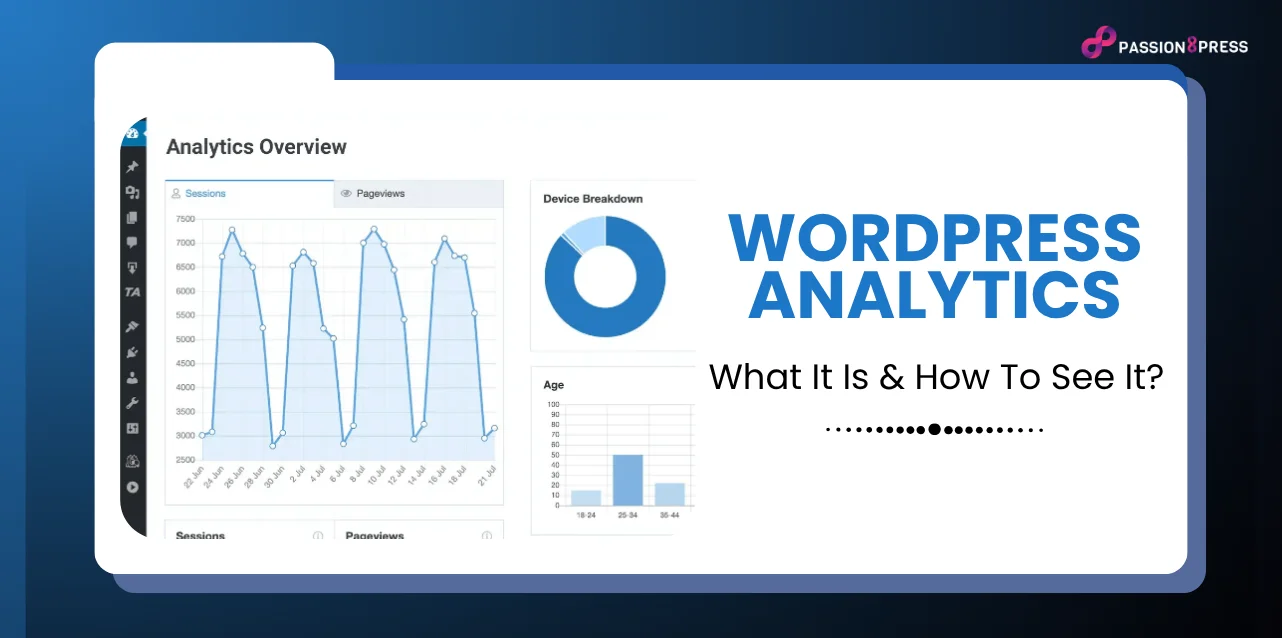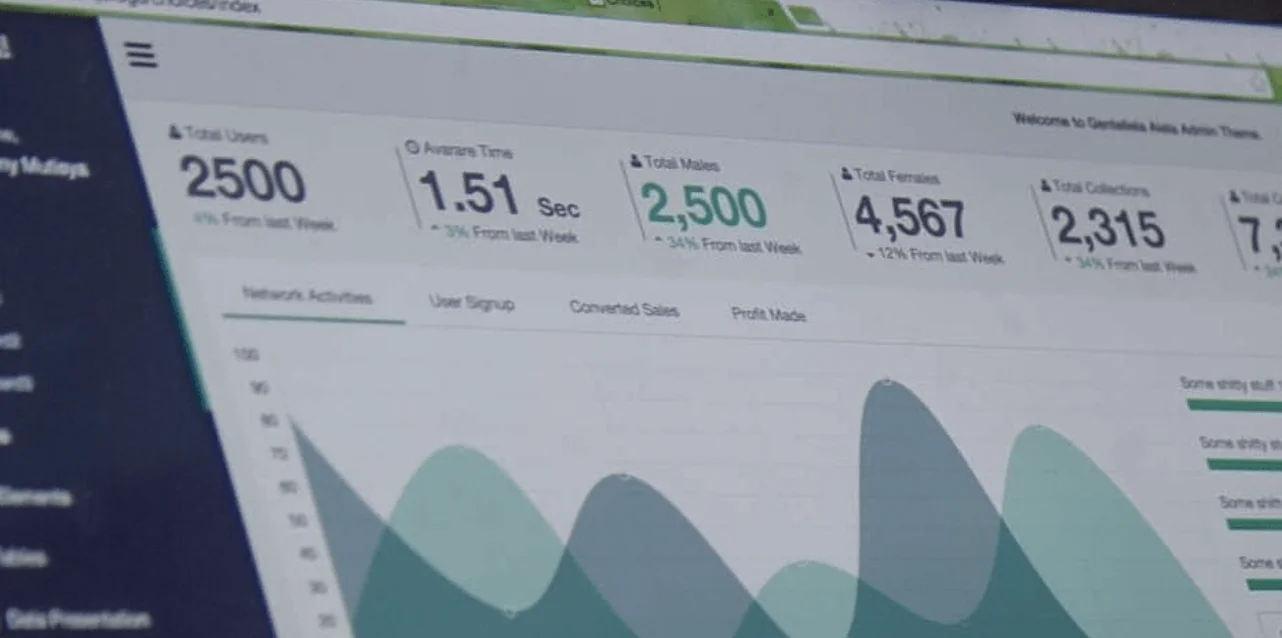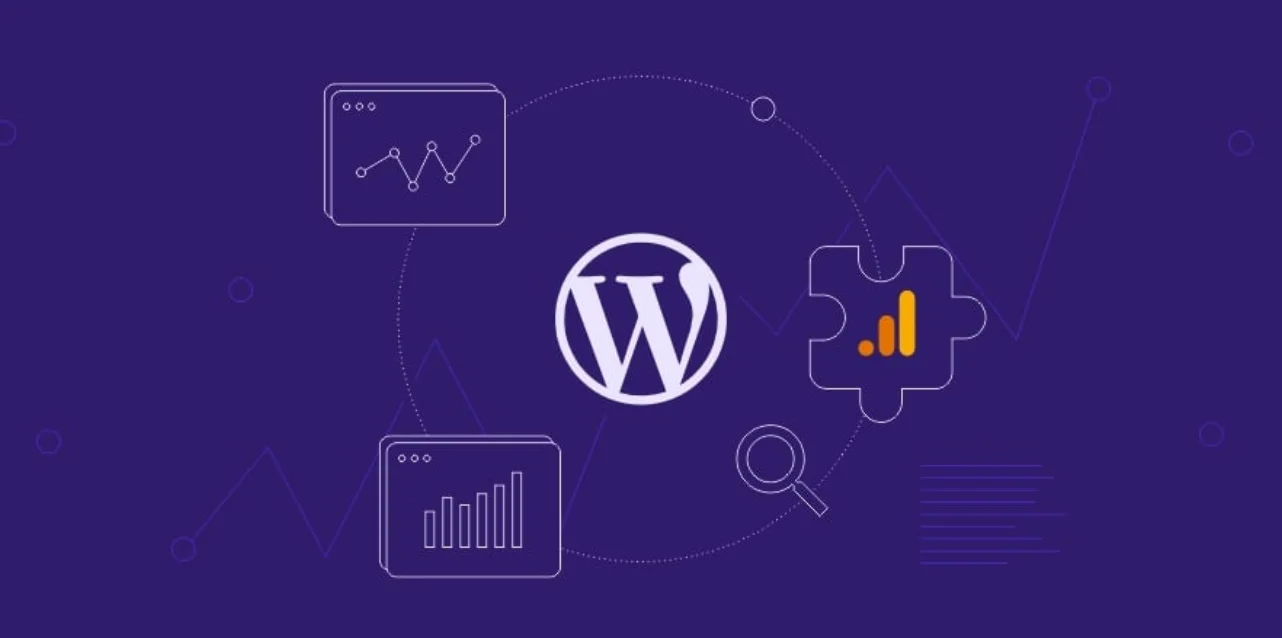You launch your website, share it everywhere, and wait for the magic to happen. But days go by, and you’re left wondering: Is anyone even visiting? That’s where WordPress analytics comes in. It gives you a clear view of your visitors—where they come from, what they click, and how they behave.
Without these insights, you are just guessing. As a business owner, you can’t afford to fly blind. Whether you’re running a maintainence service site or an online store, knowing your numbers helps you make smarter choices.
In this post, we’ll break down what WordPress analytics is, why it matters, and how to start using it to your advantage—no tech jargon, just actual answers.
In A Hurry? Listen To The Blog Instead
What Is WordPress Analytics?
WordPress analytics is all about understanding what’s happening on your website. It tracks how people find your site, what they do when they get there, and how well your content performs. With the right insights, you can make smarter decisions, improve user experience, and grow your online presence faster.
Instead of guessing what works, you rely on real data. That includes who visits your site, how long they stay, and which pages they view the most. These numbers help you see what’s working—and what needs fixing.
One of the most popular ways to get started is by setting up WordPress Google Analytics, which allows you to collect and review important traffic data directly linked to your site’s performance.
Key Metrics You Can Track with WordPress Analytics
To get the comprehensive picture, here are some essential metrics you can monitor through WordPress analytics:
- Sessions: A session is when a visitor is actively using your website, clicking around, or viewing pages. It tells you how many times people actively engage with your content.
- Pageviews: This is the total number of pages viewed. If a single visitor reloads a page multiple times, you can count each view.
- Visitors: This tells you how many different people visited your website during a specific period.
- Bounce Rate: This measures the percentage of users who leave your site after viewing just one page. A high bounce rate may signal that your content isn’t meeting expectations.
- Average Session Duration: This shows how much time visitors spend on your site during a single visit. Longer sessions often mean better engagement.
Traffic Sources: You can see where your visitors are coming from—whether it’s search engines, social media, direct visits, or referral links.
By studying these numbers, you discover areas that require attention. Maybe a blog post has a high bounce rate, or your visitors aren’t staying long enough. With WordPress analytics, you can adjust your strategy, improve your content, and keep users more engaged.
You also learn which channels bring in the most traffic. That means you can invest more time and energy into the platforms that drive results. Whether you’re refining your content strategy or learning how to create WordPress plugin features that users love, these insights are invaluable. Over time, WordPress analytics helps you boost conversions, sharpen your marketing, and get real value from every click.
How To View WordPress Analytics In Your Dashboard?
Once you have set up your website to track data, you can view essential stats right inside your WordPress dashboard. It means you don’t need to leave your site to understand what’s happening behind the scenes. A good WordPress analytics plugin makes all of this possible in just a few clicks.
Right on your dashboard, you will be able to see key website metrics—like how many people visited your site, how long they stayed, how many pages they viewed, and whether they’re new or returning visitors. You can also view how your content performs, such as which blog posts or landing pages get the most attention.
With clear visual reports, your WordPress analytics becomes much easier to understand and act on.
What Can You Track in the Dashboard?
The overview report gives you a quick summary of how your site is doing. It shows you daily sessions, user engagement, and overall traffic. You can also see where your visitors are coming from—whether it’s direct visits, search engines, or social media.
Knowing this helps you identify which marketing effort works. You’ll also get a breakdown of user devices and locations, giving you a better sense of who your audience is.
If you’re using a Google Analytics WordPress plugin, you’ll be able to access even deeper reports directly in your dashboard. No need to switch between platforms—it’s all in one place.
Dive Deeper Into Performance
In addition to basic reports, your WordPress analytics dashboard can provide detailed traffic sources, campaign data, and landing page insights. You’ll see which pages convert best and where visitors drop off. It helps you fine-tune your content and improve user flow.
You can also monitor which external links people are clicking, which affiliates drive the most traffic, and which downloadable files get the most engagement. These details are crucial for understanding how your content supports your business goals.
Some dashboards also show bounce rate, average scroll depth, and time-on-page to help you identify weak spots that need improvement.
E-commerce & Search Insights
If you run an online store, your WordPress analytics dashboard can also display vital e-commerce data, like revenue, transactions, average order value, and best-selling products. You can track coupon usage and see where users drop off in the buying process.
You can even view search performance, such as which keywords bring in the most traffic and how your site ranks on search engines. It helps you shape your SEO strategy and improve visibility.
In short, everything you need to monitor and grow your website is right there inside your WordPress dashboard, powered by a reliable WordPress analytics plugin.
Understanding your numbers shouldn’t feel overwhelming. A clear dashboard view of your site’s performance makes it easier to make smart decisions, fix what isn’t working, and double down on what is.
If you’re starting fresh or need help creating a website that supports tracking and growth, Passion8Press can help. From building user-friendly websites to setting them up for long-term success, we make sure your site is not only beautiful but also built to perform.
Passion8Press is a WordPress development agency that helps businesses build fast, modern, and high-performing websites. Whether you’re a startup, a growing brand, or an established business, Passion8Press creates custom websites tailored to your goals.
Their team specializes in everything from simple business to advanced website setups like eCommerce platforms and WordPress Multisite networks. You can hire their developers on a monthly or hourly basis, making it flexible and cost-effective.
In short, Passion8Press takes the hassle out of web development—so you can focus on growing your business while they handle the tech, design, and performance.
Read More
4+ Best WordPress Maintenance Services Of This Year
Top WordPress Analytics Plugins
Choosing the right plugin can help you turn raw data into real growth. Whether you are after basic stats or advanced reports, there’s a solution out there to match your goals. Below are some of the most trusted WordPress analytics plugins you can explore:
1. MonsterInsights
If you are looking for an easy way to gain deep insights, this plugin simplifies the process. It offers a smooth setup and connects directly with Google Analytics. You’ll find detailed reports inside your WordPress dashboard, along with real-time data, e-commerce tracking, and user behavior metrics.
WordPress analytics becomes more accessible when everything shows up in one place, with no switching tabs. Free and paid plans are available.
2. Jetpack Stats
It is a great choice for those who want built-in functionality without extra steps. Jetpack Stats provides basic reports like traffic, referrals, and popular posts. It also integrates social sharing and basic security features. The interface is clean and effortless. It is perfect for beginners.
If you need lightweight WordPress analytics with minimal setup, Jetpack Stats is worth considering. Free and premium plans are available.
3. HubSpot Analytics
Ideal for marketers, this best email plugin tracks visitor activity while syncing with your HubSpot CRM. You get lead tracking, email performance stats, and automation features that support your sales funnel. It’s designed to connect your analytics with your marketing strategy.
For those focusing on conversion and customer data, this tool brings WordPress Google Analytics plugin features plus more. Free and premium plans are available.
4. Independent Analytics
If you care about privacy and want easy-to-understand stats, this plugin gives you a simple dashboard. It shows beneficial details like form activity, heatmaps, and live visitor traffic. It even tracks WooCommerce activity and gives you breakdowns on user sessions and visitor types.
For small businesses and bloggers who need functional WordPress analytics without complexity, it’s a great fit.
5. ExactMetrics
This plugin provides features for power users. It brings in-depth reporting to your dashboard, supports e-commerce tracking, and even monitors affiliate links. You also get insights like scroll depth, device usage, and top referral sources.
If you’re wondering which Google Analytics plugin for WordPress is the best, this one checks a lot of boxes for data-heavy sites.
Wrapping Up
Understanding your website isn’t just about numbers—it’s about knowing what works, what doesn’t, and where to go next. With the right WordPress analytics setup, you gain powerful insights into your visitors, content, and marketing efforts—all from one dashboard.
Whether you’re running a blog, a business site, or an online store, tracking performance helps you make smarter decisions and grow faster. And if you’re still unsure how to start or which plugin to choose, you don’t have to figure it out alone.











